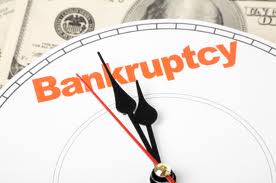 When a debtor files bankruptcy he can choose to keep secured property and continue making payments or he can choose to surrender the property. The term surrender is a bit misleading. It sounds like the debtor is simply walking away from ownership of the property or giving the property back to the lender. Actually, to surrender property in bankruptcy is simply to discharge the debt without repayment. Surrendering property does not actually transfer ownership to the lender. Ownership of the secured property is not transferred until the property is foreclosed, repossessed, or title is transferred in some other way.
When a debtor files bankruptcy he can choose to keep secured property and continue making payments or he can choose to surrender the property. The term surrender is a bit misleading. It sounds like the debtor is simply walking away from ownership of the property or giving the property back to the lender. Actually, to surrender property in bankruptcy is simply to discharge the debt without repayment. Surrendering property does not actually transfer ownership to the lender. Ownership of the secured property is not transferred until the property is foreclosed, repossessed, or title is transferred in some other way.
Understanding surrender of property in bankruptcy is especially important for debtors who wish to surrender a house. If the house is subject to a mortgage loan then the bankruptcy case will discharge the debt. Similarly, if the debtor owes property taxes or homeowner’s association dues on the date of filing then these debts are also discharged. However, the debtor continues to own the property until the title is transferred out of his name. This usually occurs when the property is foreclosed, but mortgage lenders are sometimes slow to foreclose on property. I have had cases where years after filing bankruptcy the mortgage company still has not foreclosed on the property.
Since the debtor continues to own the property they are liable for property taxes and homeowner’s association dues that come due after the date of filing bankruptcy. The debtor can choose to ignore these payments and wait for them to be paid with proceeds of a future foreclosure sale, but doing so hurts their credit. Similarly, the debtor should also keep the property insured while it still belongs to him in order to protect him from liability for any injury that occurs on the property. On the bright side, the debtor can continue to live in the house without making payments to the mortgage company until the property is foreclosed.